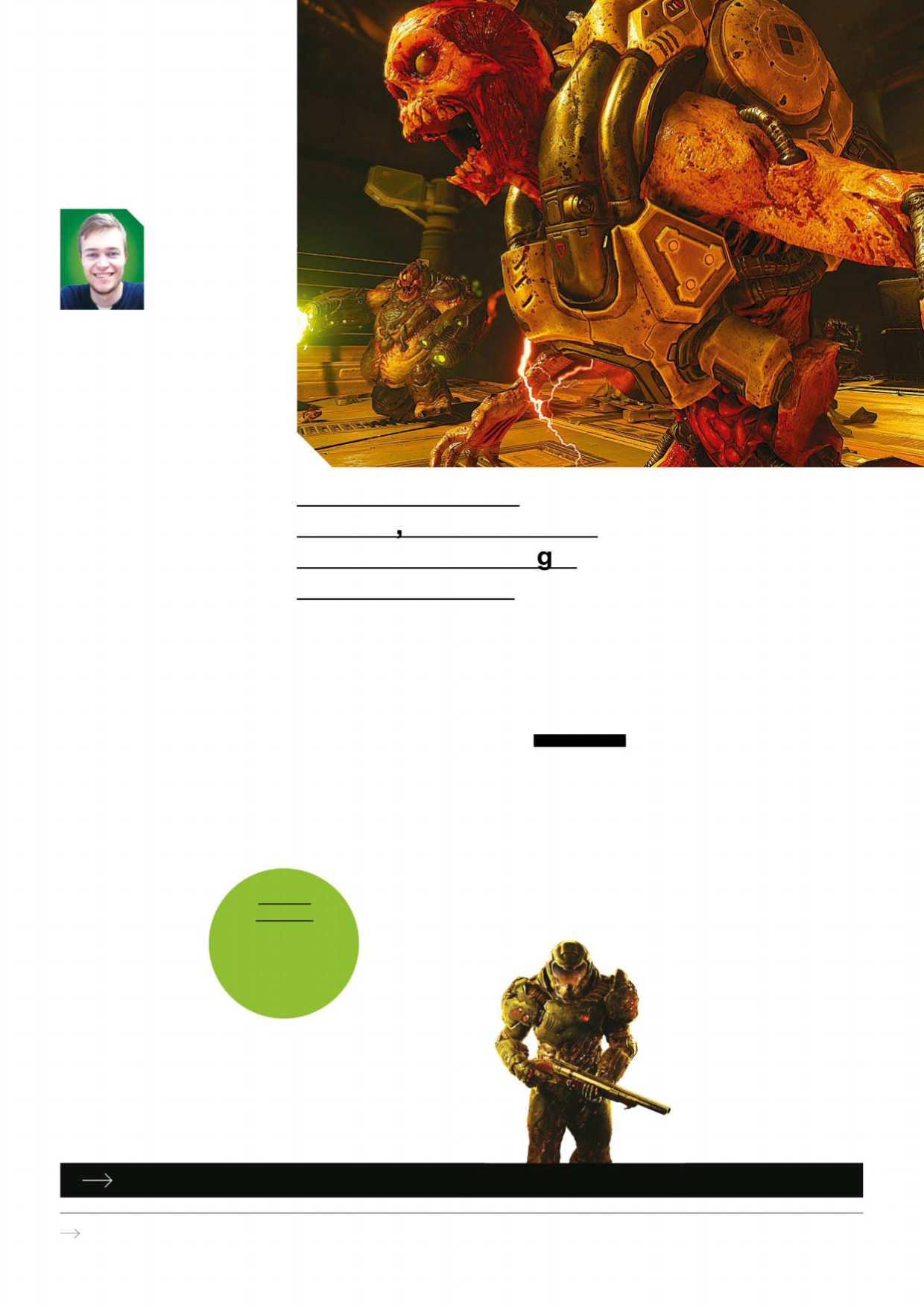
4 minute read
WHY I LOVE DOOM’S PROLOGUE
Ask just about anyone who experienced the original Doom for the first time back in 1993, and they’ll have a story to share about its opening level. It was iconic, incorporating eye-catching visuals, a memorable soundtrack, and impeccable stage design.
A similar sense of wonder carries over to the introduction of 2016’s Doom, which proves highly reminiscent of its 25-year-old counterpart, despite lacking the same revolutionary impact. Its greatest achievement can be attributed to its reluctance in employing a standard tutorial in favour of diving right in, burying into the subconscious with an array of clever design techniques.
The prologue is around five minutes in length, following protagonist Doom Slayer as he seeks to escape imprisonment from his sarcophagus and seek answers surrounding the ongoing demonic invasion. But here, the real focus isn’t the story – it’s the combat. Within just half a minute of the game’s start, Doom launches you into battle against a handful of enemies, and there are 28 demons to slay in the first five minutes alone. This is a game that makes its intentions clear from the outset – you’re here to kill demons, and the story is merely an afterthought for the most part.
The prologue foregoes some of the more modern conventions of FPS game design. It’s a shock to the system – go and watch a new player’s reaction to the immediacy of the combat, and you’ll see what I mean – but it also lends itself to a sense of intrigue and freshness, helping to encapsulate that old-school Doom feel.
One of the most effective ways it accomplishes this is in the lack of cutscenes. Doom sets its premise in a short space of time, and does so with minimal dialogue, featuring a completely voiceless main character who uses nothing but body language to convey his feelings. We see him crack his knuckles in anger, “You’re here to kill demons and the story is merely an afterthou ht for the most part” cock his shotgun in style, and punch everything from enemies to elevator controls with a maniacal sense of power, helping to build character in subtle fashion. The prologue subsequently utilises these traits to enhance the game’s fast-paced nature, taking advantage of the Doom Slayer’s hot temper to reduce lengthy story elements with the destruction of ABOVE It’s only nearby scenery. a matter of Another way the prologue works to minutes before you encounterbuild speed is in its combat, which the first takes the form of an arena-based demon-spawning segment nearing its conclusion. At Gore Nest. face value, this serves as little more BELOW The Doom than a means for dispatching Slayer acquires his armoured and demons, but it also exists highly-
PASSING to accomplish a key customisable
THROUGH goal – forcing players to Praetor suit in the prologue.
The Vault-Tec logo t keep moving. Every bit from Fallout is included of ammo, health and as an Easter egg on enemy movement isthe door leading to the first built to encourage the elevator. player to remain active Stay still, and you’re guaranteed to fail. Living hell Each and every footstep, character animation and storybuilding element is carefully crafte helping to set out a statement of intent without ever making you fee
e e. d, l as if you’re engaging in a paint-bynumbers tutorial. Instead, it spends its time generating a ballsy first impression that delves into both the conscious and subconscious mind. It has the confidence to get in your face and trusts you to determine whether you’ll pursue the hellacious ride.
It’s all summed up in the pulsating outro, in which the Doom Slayer is seen taking an elevator to the beginning of the game’s first real level. The sheer badassery of Doom is displayed here in full force, with the main character going into a fit of rage as he takes in a derogatory audio link from Dr Samuel Hayden, set to the backdrop of Mick Gordon’s breathtaking ‘At Doom’s Gate’ remix. As the title screen hits, the music reaches its crescendo, pumping its volume and sending several dozen shots of adrenalin pulsating through the screen. It’s all timed to perfection, and the results are mesmerising.
I can’t think of any introductory segments that have captured my attention in the way Doom’s prologue has in recent years. And ultimately, id Software really didn’t have to invest such care and attention in its development, but in doing so, they’ve helped to entice both old-school fans and a brand-new generation of demon slayers to the series. You only get one chance to make a good first impression, especially in the competitive world of first-person shooters, and Doom accomplishes this with one of the most memorable and riveting opening sequences on the Xbox One.










